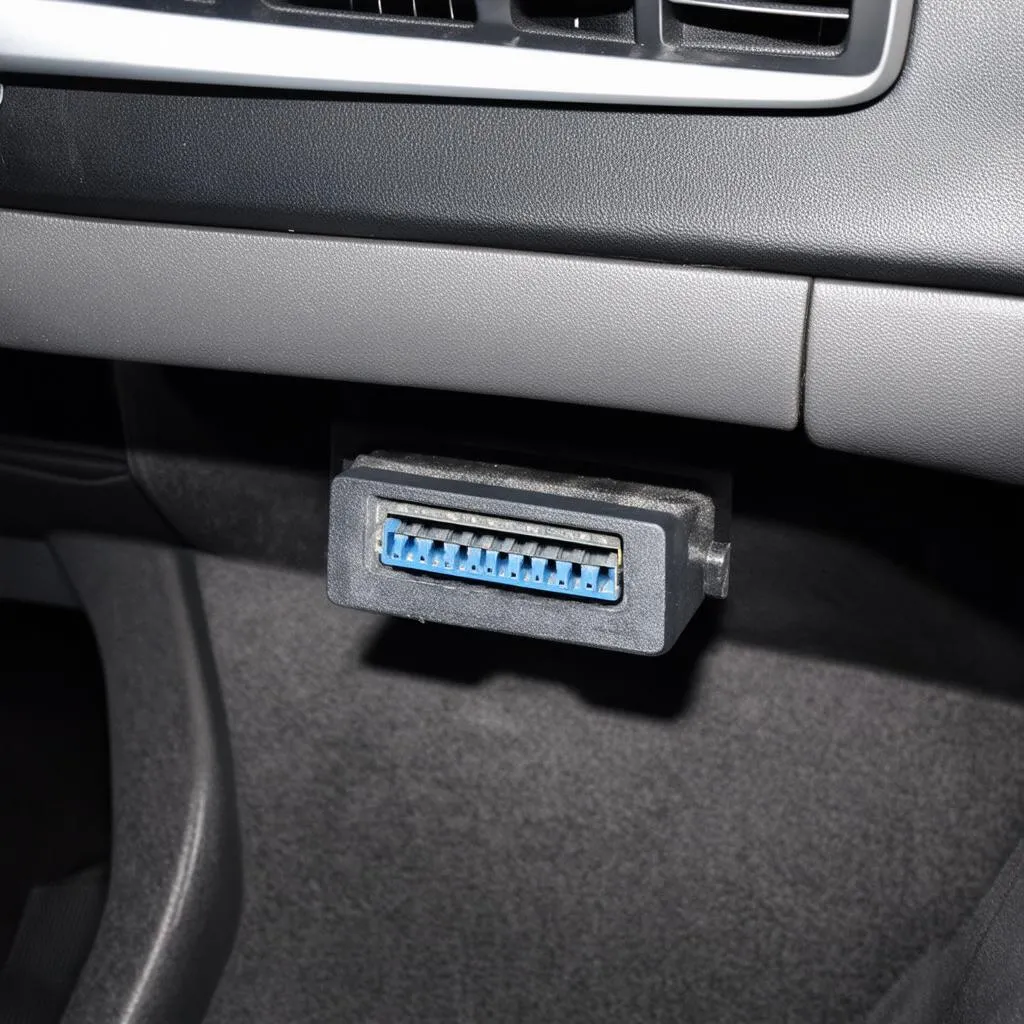Have you ever been driving your trusty 2003 Toyota Camry, and suddenly, the “Check Engine” light decides to ruin your day? Don’t panic! That mysterious light doesn’t necessarily signal the apocalypse for your car. Think of it as your Camry’s way of trying to tell you something is up – like a little digital cry for help. And that’s where OBD codes come in, acting as the language translator between you and your vehicle.
Deciphering the Code: What are 2003 Toyota Camry Obd Codes?
Imagine you walk into a doctor’s office, feeling under the weather. The doctor examines you and then points to a chart with complicated medical terms. Confusing, right? That’s kind of what OBD codes are like, but for your car.
OBD stands for On-Board Diagnostics, and it’s a system built into your 2003 Camry (and most cars built after 1996). OBD codes are standardized alphanumeric codes that your car’s computer uses to signal specific issues.
Let’s say your Camry throws a code P0420. This code indicates a problem with the catalytic converter system efficiency. Now, you might not know exactly what a catalytic converter does, but armed with this code, you can start investigating the problem or provide valuable information to your mechanic.
Why Should You Care About These Cryptic Codes?
You might be tempted to ignore that blinking “Check Engine” light, especially if your Camry seems to be running fine. But trust me, understanding and addressing OBD codes is crucial for several reasons:
- Early Detection: Often, OBD codes can detect minor problems before they become major (and expensive) headaches.
- Safety First: Some codes, like those related to your Camry’s braking system, need immediate attention to ensure your safety and that of others on the road.
- Save Money: Identifying and addressing a problem early on, thanks to OBD codes, can save you a lot of money on potentially bigger repairs down the line.
- Peace of Mind: Knowing what’s going on with your car provides a sense of control and can alleviate anxiety about potential breakdowns.
Common 2003 Toyota Camry Obd Codes and What They Mean
Just like a doctor uses specific terms to diagnose illnesses, your Camry uses specific codes for its ailments. Here are a few common ones you might encounter:
- P0171: This code means your Camry’s engine is running lean, which could be due to a vacuum leak, a faulty oxygen sensor, or a problem with the fuel injectors.
- P0420: This code, as mentioned earlier, points to a potential issue with the catalytic converter system efficiency.
- P0300: This code is a general indication of a misfire in one or more cylinders. This could be caused by faulty spark plugs, ignition coils, or fuel injectors, among other things.
- P0135: This code signals a problem with the oxygen sensor heater circuit (Bank 1, Sensor 1). A faulty oxygen sensor can negatively impact your Camry’s fuel economy and emissions.
How to Read Your 2003 Toyota Camry’s OBD Codes
To retrieve the OBD codes from your Camry, you’ll need an OBD-II scanner. You can find these scanners at most auto parts stores or online.
- Locate the OBD-II port. It’s usually located under the driver’s side dashboard, near the steering column.
- Plug the scanner into the port.
- Turn on the ignition (don’t start the engine).
- Follow the scanner’s instructions to retrieve the codes.
 OBD port under dashboard
OBD port under dashboard
When to Seek Professional Help
While some OBD codes point to simple fixes, others can indicate complex issues that require a trained eye. If you’re uncomfortable tackling car repairs yourself, it’s always best to seek help from a certified mechanic. Remember, just like you wouldn’t self-diagnose a medical condition, it’s often safer to leave complex car repairs to the professionals.
Frequently Asked Questions about 2003 Toyota Camry Obd Codes
Q: Can I drive my car with the Check Engine light on?
A: It depends on the severity of the issue. While some problems might be minor, others can lead to serious damage if ignored.
Q: Will disconnecting the battery reset the Check Engine light?
A: Yes, temporarily. However, if the underlying problem persists, the light will come back on.
Q: Do OBD codes provide a complete diagnosis?
A: OBD codes are clues, not definitive diagnoses. They point you in the right direction, but further inspection is often needed.
Other Resources and Information
- Techcarusa.com Forum: Connect with fellow 2003 Camry owners and share your experiences with OBD codes.
- Repair Manuals: A repair manual specific to your Camry model can be an invaluable resource.
Need Help with Your 2003 Toyota Camry?
Feeling overwhelmed by those cryptic codes? Don’t hesitate to reach out to our team of automotive experts via WhatsApp at +84767531508. We’re here to help you get to the bottom of your Camry’s issues and keep it running smoothly.
Remember, a well-maintained car is a happy car (and a happy driver!).